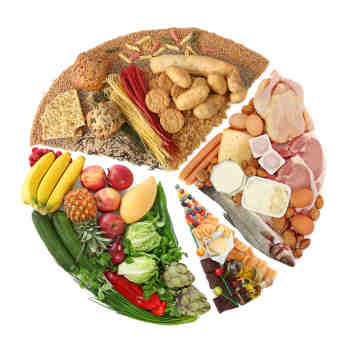23rd Sep 2014
Micronutrients vs Macronutrients: The Importance of Both and How to Prioritize
All of the foods that we eat fall under one of two categories: macronutrients or micronutrients. One of these is not more important than the other, as both are essential for eating a healthy diet and for proper body function.
Why are both macronutrients and micronutrients important?

“Macronutrients” are essentially the way we classify the calories that come from our food. “Macro” usually means big, so you can think of the “big picture” of our foods when you hear the term macronutrient. Each food that we eat has a proportion of the macronutrients that it contains: the carbohydrates, fats and proteins. These three terms are familiar to most of us, and are basically the way that we describe the calorie source, or energy source, of a food. Eating all three macronutrients is important because they work together to us energy in the form of calories.
Most foods have more than one macronutrient in them, for example beans which are made up of proteins and carbohydrates. Nuts, vegetables, and meat are other foods that have multiple macronutrients, since the calories from these foods are comprised of different proportions of carbs, fats, and proteins.
Micronutrients on the other hand are the “smaller picture” of our food; you can think of the word micro in micronutrients and associate it with the small details of what we are eating. Micronutrients are the vitamins, minerals, phytochemicals, and antioxidants that are in our foods. These are usually terms that we are less familiar with and cannot always pinpoint easily for different foods.
An example of micronutrients would be the phytonutrient pectin, vitamin C, and antioxidants that an apple contains. Micronutrients are important because they are what protects our bodies from disease, slows the aging process, and helps every system in our body to properly function- our digestive system, reproductive system, nervous system, immune system, and so on. Our body uses beneficial micronutrient chemicals to keep us going.
How to Prioritize Macronutrients and Micronutrients

The amount of micronutrients and macronutrients varies a lot depending on the food. Fresh, whole foods tend to have much more micronutrients (vitamins, minerals, etc.) than do processed, junk foods. Foods that are considered processed and “high calorie”- like fried foods, sweets, refined grains, and poor quality meats and dairy products- contain a high amount of macronutrients (usually a lot of carbs and fat due to high levels of sugar and oils) but a low amount of micronutrients.
The best thing we can do to ensure we are getting enough of both is to eat as many “whole foods” as we can and to avoid processed, packaged foods. When we eat a range of fresh, real foods as they are found in nature- thing like vegetables, fruits, beans nuts, whole grains, quality animal foods like seafood and eggs- we are ensuring that we eat enough macronutrients and micronutrients.
These types of foods are high in vitamins, minerals, and antioxidants (micronutrients), plus they have a range of healthy fats, carbs, and proteins to offer (macronutrients). Real, whole foods tend to fill us up without leaving us hungry and wanting to overeat, so we get enough calories overall without consuming too many, and those calories come from foods with beneficial micronutrients as well.
Avoiding junk foods that have been processed, and therefore many of their beneficial micronutrients have been removed, is the best thing you can do to ensure you are eating a healthy diet.
Life & Food offers Pure Green Coffee Bean Extract for your antioxidant needs. See it here.
